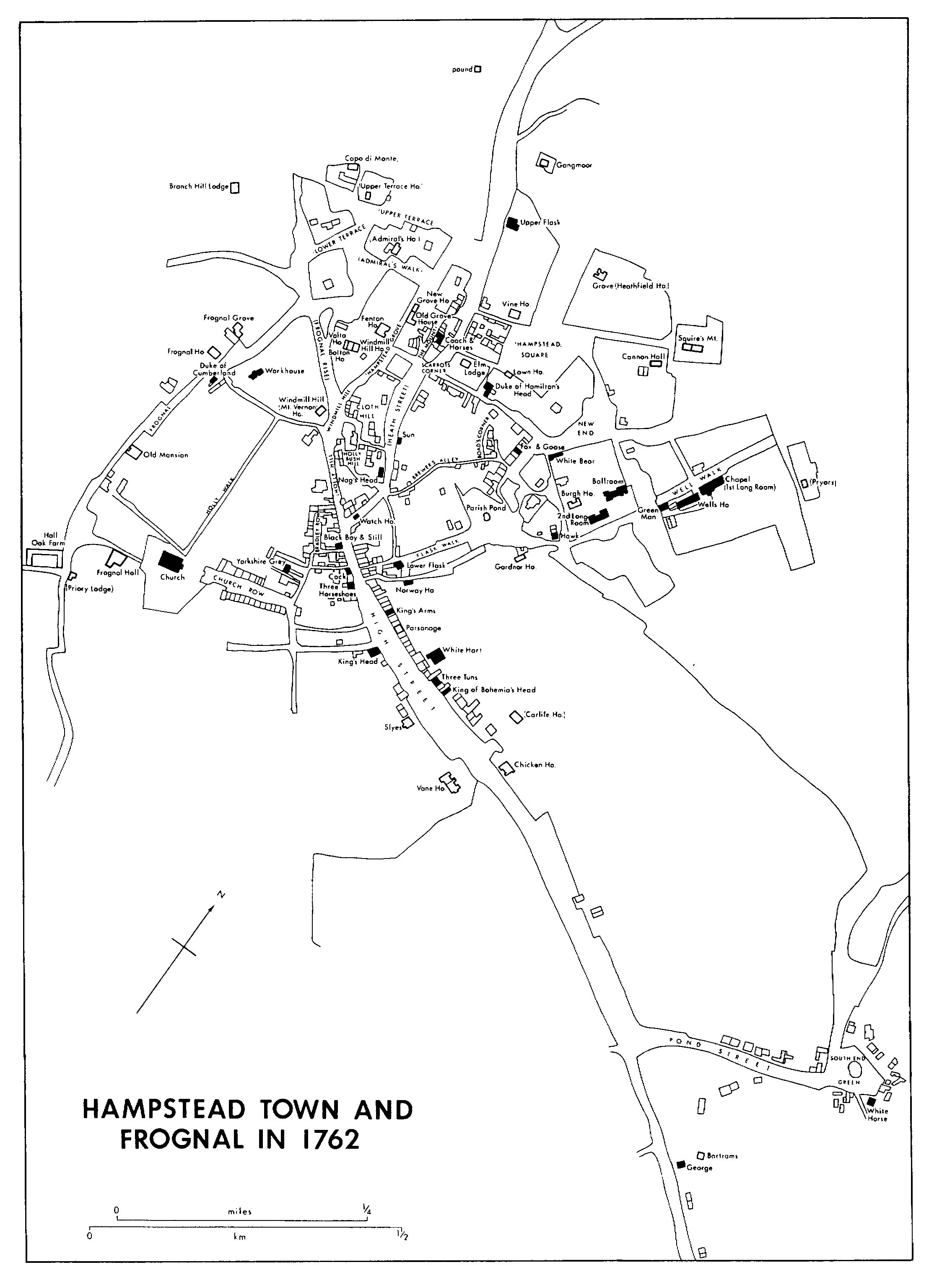Hampstead & Highgate
Highgate and Hampstead are the two hilltop villages that border Hampstead Heath, and the history of both is tied up with the Heath itself. Surrounding the Heath are also Dartmouth Park (east), Gospel Oak (south), Golders Green (north west), along with other green spaces like Queens Wood and Waterlow park.
In the second half of the 1600s, when Charles II was on the throne, Hampstead and Highgate were small villages. They grew as people fled London after the plague of 1665, and the great fire of 1666. At that time, there were windmills on Windmill Hill and Parliament Hill. The Elms was Mother Hough’s Tea Shop, and an inn called Ye Green Man stood where Inverforth House is today.
Hampstead’s brief spa town fame
In 1698, trustees of the Wells were granted a yearly rent of five shillings (25p) for six acres of ‘waste land’ on Hampstead Heath. The spring water here was rich in iron salts and considered to have medical properties - was said to cure gout, gravel, shingles and scrofula. The permission was granted on the condition that they use it “for the sole use benefit of the poor of the parish of Hampstead”.
The Trustees built a Long Room on the south side of Well Walk, compromising of a Pump Room where the water could be drunk, and an Assembly Room for dancing, concerts and other forms of entertainment. There was a tavern nearby, and various raffling shops.
The Hampstead Wells was initially successful, but its distance from London, competition with other London spas and entertainment, and problems with rowdy behaviour led to a decline in its popularity. The Long Room was closed, and the basin and fittings were removed from the Pump Room and installed in a building next to the Wells Tavern.
In the 1730’s a new Long Room and Ballroom were built in Well Walk adjacent to Burgh House. Attempts were made through subscriptions and higher priced tickets for balls, concerts and other events to attract a more ‘discerning clientele’ than the previous long room.
When the Second Long Room closed down at the end of the 18th century, Hampstead’s days as a spa were over. However, the Wells period had encouraged substantial development in Hampstead and bolstered the areas reputation.
19th Century HamPstead & Highgate
During the Napoleonic Wars, in about 1798, the Loyal Hampstead Association was formed ahead of a possible invasion, captained by Josaih Boydell. The Association was formed of ‘well respected gentlemen’, and they held shooting contests and dinners at The Long Room in Well Walk on summers days until it was disbanded around 1803. It’s not clear how effective a defense they would have been had it come to it, but these ‘brave volunteers’ at least seem to have given some comfort to local people. In the same period, a singer called Mr. Thompson wrote No Accommodation for Buonaparte, capturing the spirit of defiance at the thought of a Napoleonic invasion, the English distaste for French, and the characters at the pubs in Highgate and Hampstead. Each verse was broken up by a nonsense chorus of ‘Tol de Rol’, which was popular in folk songs at the time and which the crowd would join in with:
“All the world’s in a fright, and thinks Boney is coming.
But, bless you, good folks, I’m sure he is humming;
If such are his thoughts let him come if he dare;
When he starts, why to drub him we’ll quickly repair.
If to Highgate should come, then, the poor simple soul,
At the Gate House, I’m sure, they’d make him pay toll;
And the folks at the Castle he’d find were no lubbers;
If he must play at bowls, he must even take rubbers.
At the Angel, the Bull, the Bell or Green Dragon,
He’ll find that his quarters are nothing to brag on;
It won’t do at the Nelson his liquor to sup,
For he’ll find that the landlady’s “Prime” and bang up.
At the Lion I’m sure he’ll find a “Goodman”,
And the Crown, we all know, he’ll grasp if he can;
The Cooper’s Arms and the Mitre would tease him, I fear,
For two English widows can match one Mounseer.
He’d be wrong at the Flask, the Fox or Rose and Crown,
And “Dutton’s” stout Wrestlers would soon have him down;
If he gets in the Sun, it’s all over, we know,
And at the Duke’s Head he’d be lost in the “Snow”.
The Coach and Horses have drawn me near the end of my song,
With sledge hammer the landlord Boney’s pate would lay on;
He’d find in these quarters he made a wrong choice,
For he’d meet with his match in fat, gouty “Dick Joyce”.
But, my very good friends, away with your fears,
You know we are guarded by brave volunteers;
Should Boney once land, it would not be long
Ere we stop his career, sirs, - and here stops my song.”
Up until around 1800, Hampstead and Highgate were fairly self-contained. The roads were bad and there was little transport. Most people living here worked on the land, or waited upon their wealthy neighbours. Many of the taverns and inns had livery stables and rooms for travellers coming to and from London – the ‘stagecoach’ took its journey in stages, resting its passengers at inns en route. The local stagecoach journey into London ran from Mill Hill to Bank, calling at Hampstead. The main roads were maintained by tolls, like the toll at the Spaniards Inn in Hampstead and at the Gatehouse in Highgate. The stagecoach disappeared by the mid 1800s, and was later replaced by horse-drawn and then electric trams.
